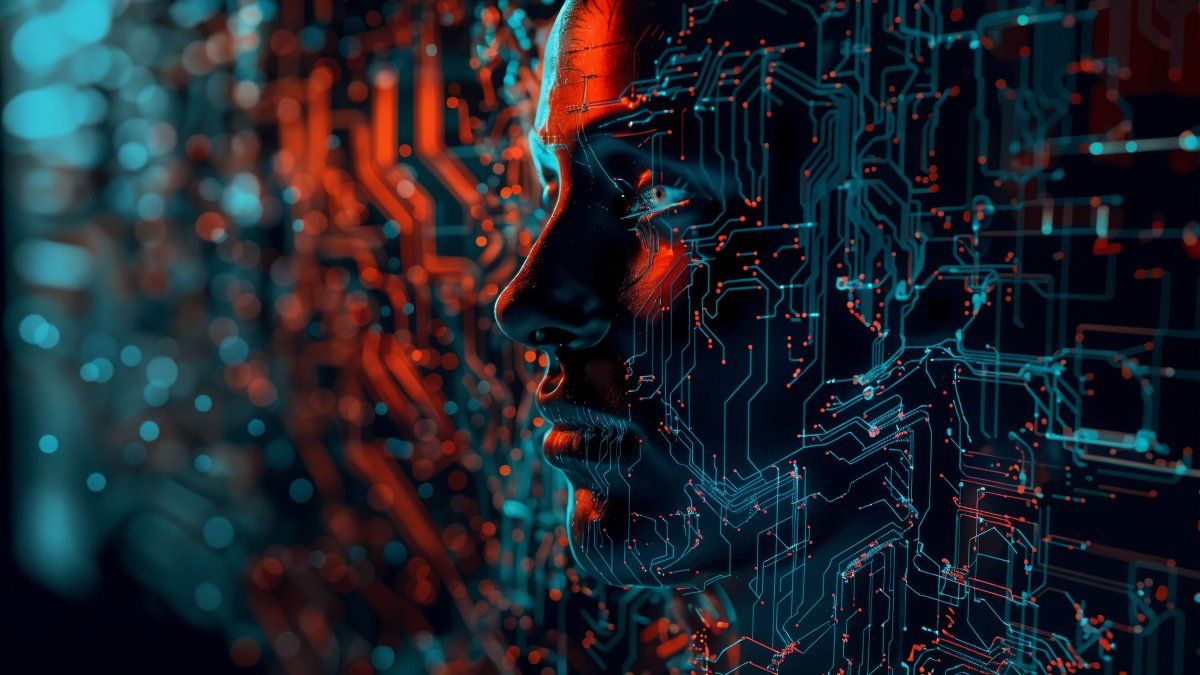In this context, the Replacement for a significant part of human tasks by these “intelligent” devices has led to numerous intellectuals of opposing ideologies (from interventionist to liberals) to raise the need to have a universal income As an essential tool To maintain social and political coexistence (and demand) of an increasingly aging population.
In this general context is that the impact of AI on the financial world addressing it as a subsystem With their peculiarities.
In concrete terms, the regulation of AI in the financial system faces some challenges that are its own and others that are more general to the entire ecosystem.
An example of the latter It is the high concentration that is observed in a small number of large companies “bigtechs” that “produce” the AI globally.
The risks of concentrating the production of AI.
In accordance with a report published by the Bank of International Payments (BIS) in March 2025 entitled “The AI offer chain”, The rapid advance of this is explained in a complex and concentrated supply chain composed of five key layers: Hardware, cloud infrastructure, training data, base models and AI applications.
At the moment, The market structure of the first two layers (hardware and cloud infrastructure) is characterized by The domain of very few players.
The BIS report argues that in the case of the hardware most used by AI applications (the chips specialized in complex calculations called GPUS Graphic Processing Units), the company Nvidia, Based in the United States, it concentrates most of the market with a participation that exceeds 90 %.
For its part, the segment of Cloud computing (Dedicated to “Rent ”Computing Power, Storage and Software) It is dominated by three large technology companies: Amazon Web Services (AWS), with a market share of 31 %, Microsoft Azure, with 24 %and Google Cloud Platform, with 11 %.
Even more worrying is the fact that these same actors concentrate, through an ecosystem of products and platformssuch as browsers (Google Chrome), Social Networks (Instagram, Facebook), messaging services (WhatsApp) or applications (Microsoft Office) A huge amount of personal data that massaged with tools of AI allows them to capture our attention and influence our will (and in our consumptions are material, cultural or political goods). Amazon, Microsoft, Google and Meta They have pledged to invest more than 300,000 million dollars this year, much of which will be allocated to AI infrastructure.
Finally, and as regards the applications of AI oriented to the end user (such as chatgpt, gemini, co -pilot, goal AI), although currently a proliferation of solutions can be observed, It is likely that the dynamics of the market lead to very few winners to end up concentrating and integrating the entire productive chain of AI.
Before this scenario, concrete initiatives in different regions of the world have emerged, such as Latamgpt – impulsed since Chile and which have joined Brazil and other Latin American countries – seek to dispute the algorithmic control exercised by Bigtechs, promoting artificial intelligence rooted in the needs, languages and digital sovereignty of Latin America.
The concentration of this market in a few actors is not harmless, it generates risks of technological dependence affecting the digital sovereignty of companies, governments and people throughout the planet.
Given this panorama The selection of IA suppliers at its different levels represents a strategic challenge for the different entities that act in the financial systemthose that do not always have knowledge or tools to evaluate their different implications and risks.
AI and Financial System
Financial institutions have been using artificial intelligence (AI) for many years, whose origin dates back to the late 1950s. The significant growth of computer power and data availability allowed the field of automatic learning to advance significantly from the 1990s.
In the Financial Market of the AI on the offer side Advances in large language models stand out (LLM), Deep learning techniques, access to more unstructured data sources and increased computational power.
From the optics of the demand for AI, Financial institutions are accelerating these tools rapidly To increase your profitability, achieve advances in risk management, improve your productivity, complying with regulations more efficiently.
The border on which they work Currently the main laboratories They are the agents of AIthat is, systems that are based on advanced LLM such as GPT-4 or Claude 3 and that are endowed with some autonomy with planning capabilities, long -term memory And, in general, access to external tools such as the ability to execute computer code, use Internet or market operations.
These agents are the ones who represent the greatest threat to the jobs in the financial sector.
The future of employment in the financial world
Artificial intelligence (AI) It is transforming the way in which entities and financial regulators use the human capital they have.
A key question about the role of AI agents It is whether they will improve human skills acting as “co -drivers” or if they will be able to become autonomous tools replacing human operators.
A report published by Globant in June of this year highlights that the impact of AI on employment is already tangible: AI agents are modifying traditional functions, such as customer service, fraud prevention, knowledge management and personalized advicereplacing routine tasks and generating the need for new skills in workers.
According to a report published by the Bloomberg news agency this year I could suppress around 200,000 jobs in the next 3 to 5 years in the financial sector.
However, and despite numerous cases and estimates of this type, the predominant (and reassuring) narrative argues that IA will transform jobs into the financial sector rather than eliminate them in mass, being the routine and repetitive tasks the most susceptible to being automated.
The risks of AI in the financial system
The main risks that AI brings to the stability and operation of the financial system are:
- The lack of transparency of complex automatic learning models,
- dependence on large volumes of data,
- threats to consumer privacy,
- Cybersecurity,
- “hallucinations” and algorithmic bias, and
- The concentration in a small number of suppliers.
However, various international organizations, such as the OECD (Organization for Economic Cooperation and Development)IOSco (which brings together the supervisors of capital markets) and the bis ( that groups the central banks) they agree that the use of artificial intelligence in the financial system does not necessarily create new risks, but tends to exacerbate existing ones. Among them are the risk of model, improper use of data, opacity in decision -making and concentration in few technological suppliers. In these cases the scale, speed and autonomy of the AI amplify these challenges, making adequate supervision even more necessary.
Regulate the AI. Challenges and limitations
In the financial world It usually happens that regulation inevitably comes later than innovationwhat some consider positive to the extent that it allows it to flourish without witnessing it early.
However, In the case of technologies as disruptive and powerful as AI this look can be naive (or interested) since the speed and The magnitude of that gap can cause severe damage in financial stability and user protection.
To these difficulties, and beyond their more or less regulatory looks, the fact is added that most financial supervisors throughout the planet lack human and technological resources necessary to face these complex innovations.
Diverse postures
In this regard, a first necessary step to face this universal phenomenon is trying to articulate effective international cooperation Among the different local competent authorities.
However, this need It clashes with diverse regulatory temperaments that follow the main areas of power.
While China promotes and controls these developments under the severe look of the Communist Partyin the United States Large technological ones take advantage of the shortage of standards to innovate as they accumulate growing power, influence and money.
For its part The European Union (EU) maintains its traditional most regulatory approachhaving recently approved a risk -based approach, categorizing AI systems according to the potential damage they could cause to people and society. For example, financial services used in high -risk applications, such as credit rating, fraud detection and algorithmic trade, are subject to strict regulatory requirements
In turn Global financial regulators, both bis and iOSco, Under the coordination umbrella of the Financial Stability Forum They have produced numerous documents this year analyzing this phenomenon, facing surveys and Designing guidelines for national organizations, putting special emphasis on the need for national regulators to train and update technologically.
The difficulty of regulating a phenomenon such as AI constantly changing some regulators, such as Chile or Brazil, following OECD guidelines adopt A “technologically neutral” approach, which does not focus on regulating a specific technology, but in tackle The associated effects, uses or risks, regardless of how they are technically implemented
Conclusions
The AI seems to be acting as a powerful catalyst for changes in the future of work, expanding the digital divide between countries, with strong impacts on the economic and financial segment.
While the financial sector is one of the ones that will be most impacted by this phenomenon, the high degree of penetration that has achieved a phenomenon difficult to address sectorially.
The task of regulating AI in the financial system exceeds traditional regulators, such as central banks or securities commissions, which also often lack the resources to face that task.
We must not forget that algorithms are instructions created by human beings loaded with the economic, political and cultural biases and interests of those who elaborate them.
Maybe One of the main challenges of politics in the coming years is to build a collective consciousness and will so that Those powerful algorithms become inclusion and development tools.
Former president of the National Securities Commission. Professor of Fintechs, Bigtechs and cryptoactive. University of Buenos Aires.
Source: Ambito
David William is a talented author who has made a name for himself in the world of writing. He is a professional author who writes on a wide range of topics, from general interest to opinion news. David is currently working as a writer at 24 hours worlds where he brings his unique perspective and in-depth research to his articles, making them both informative and engaging.




